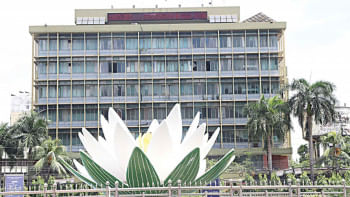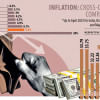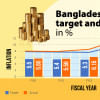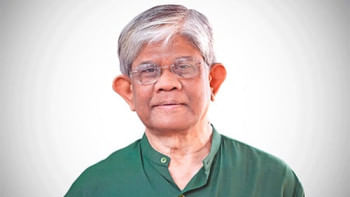BB to adopt crawling peg to curb exchange rate volatility

The Bangladesh Bank today said it is contemplating the implementation of a crawling peg system to regulate unusual fluctuations in the currency's value.
The peg system would be linked to a carefully selected basket of currencies and operate within a predefined exchange rate corridor.
"This strategy is aimed at tempering unusual fluctuations in the currency's value," it said in its monetary policy statement.
By setting a competitive equilibrium exchange rate at the midpoint of the corridor, the BB would establish a stable benchmark while retaining the flexibility to intervene in the market as necessary to maintain the currency within the designated boundaries.
The crawling peg is a system of exchange rate adjustments in which a currency with a fixed exchange rate is allowed to fluctuate within a band of rates. The method fully uses the key attributes of the fixed exchange regime, as well as the flexibility of the floating exchange rate regime.
Currently, only three countries -- Botswana, Honduras, and Nicaragua – use a crawling peg, according to the International Monetary Fund.
In 2022, some 13.4 percent of the IMF members used the hard peg, 46.9 percent the soft peg, which includes the countries using the crawling peg, and 34 percent floating exchange rates.
Crawling pegs are often used to control currency moves when there is a threat of devaluation due to factors such as inflation or economic instability. At the same time, maintaining a crawling peg imposes constraints on monetary policy like a fixed peg system, the IMF said.
According to the IMF's annual report on exchange arrangements and exchange for 2022 released in July last year, Bangladesh is one of 24 nations that follow crawl-like arrangements. Other nations include Algeria, Gambia, Kenya and Sri Lanka.
Bangladesh's foreign exchange regime has been facing serious volatility for the past two years, with the stock of forex reserves halving and the taka losing its value by about 28 percent.
The reserves stood at $20.18 billion on January 10 from $40.7 billion in August 2021.
Currently, the Bangladesh Foreign Exchange Dealers Association (BAFEDA) and the Association and Bankers Bangladesh (ABB) are fixing the dollar rate. Experts say the rate-setting model is not working.
Since mid-2022, the taka has been depreciating against the US dollar, a trend primarily attributed to a balance of payments deficit leading to a significant reduction in foreign exchange reserves over the year.
The weakening of the currency has been a contributing factor to domestic inflation, as the cost of imports has risen.
In response to these challenges, there is an increasing call for a gradual shift towards a market-based exchange rate system.
This transition is advocated to stabilize the exchange rate and prevent further depletion of the country's foreign exchange reserves.
For the second half of FY24, Bangladesh Bank's strategic directives are centred on upholding a vigilant, hawkish approach to monetary policy until inflation rates are effectively reined into a desired level.
The BB says the crawling peg system would serve as a transitional arrangement, paving the way towards a fully flexible regime in the future.

 For all latest news, follow The Daily Star's Google News channel.
For all latest news, follow The Daily Star's Google News channel. 









Comments